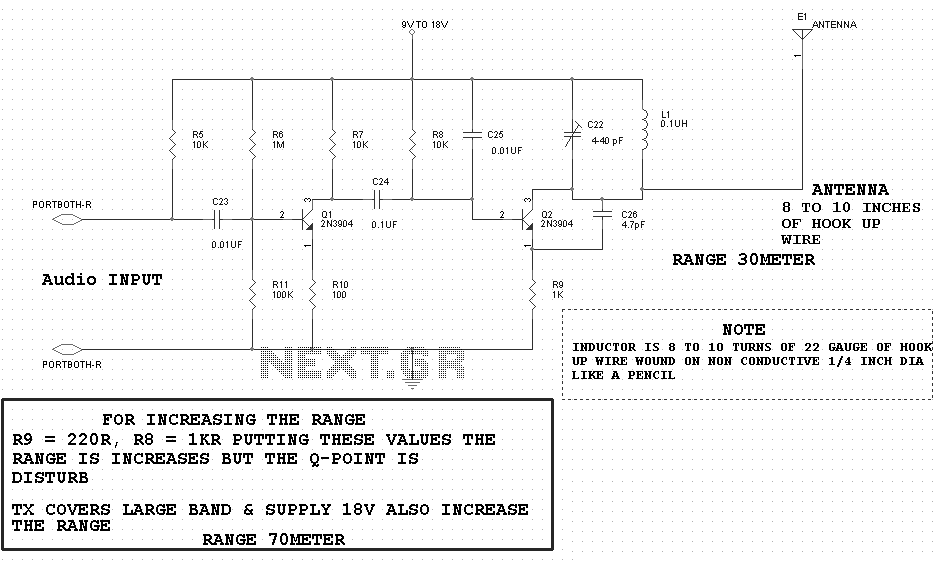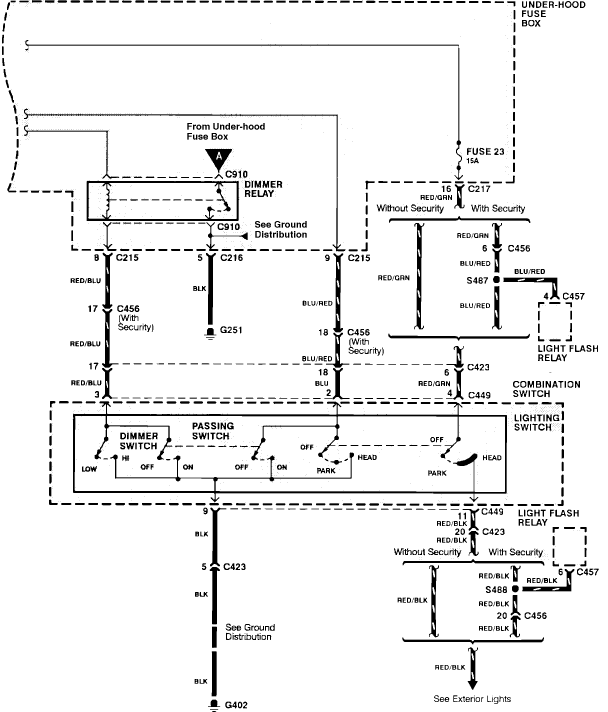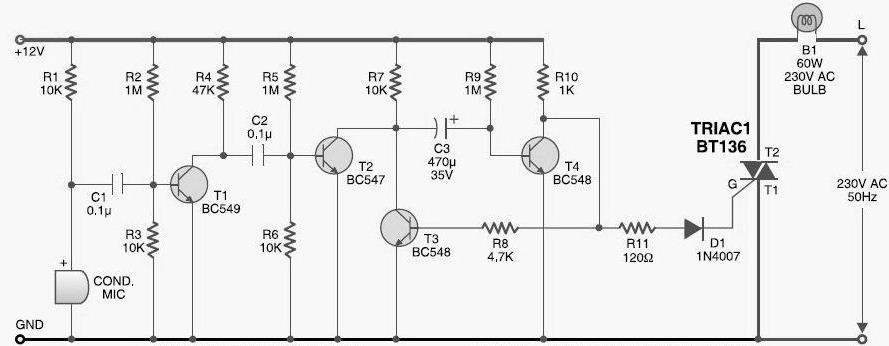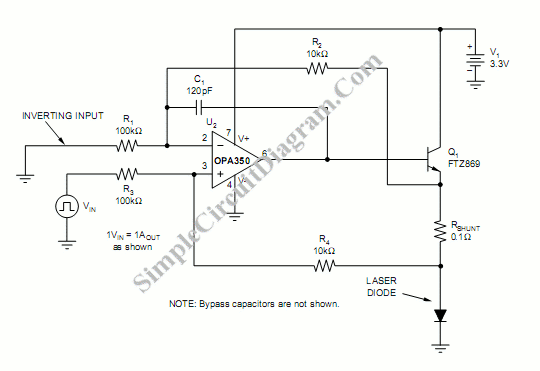
diy blue beam dye laser

The 15 kHz frequency is used to drive the flyback transformer; however, the high voltage at the output is DC.
The flyback transformer operates by converting low-voltage DC into high-voltage DC, utilizing a specific driving frequency, in this case, 15 kHz. This frequency is crucial for the efficient operation of the transformer, as it determines the rate at which the magnetic field in the transformer core builds up and collapses. The flyback transformer is typically employed in applications requiring high-voltage outputs, such as in CRT displays, ignition systems, and various power supply circuits.
In operation, when the primary winding of the flyback transformer is energized at 15 kHz, it induces a magnetic field in the transformer core. During the "on" phase, energy is stored in the magnetic field. When the drive signal is turned off, the magnetic field collapses, inducing a high voltage in the secondary winding. The output is rectified and filtered to produce a stable high-voltage DC output.
The design of the circuit must consider components such as the primary and secondary windings, the core material, and the rectification method. The choice of these components will affect the efficiency, output voltage, and overall performance of the flyback transformer circuit. Proper consideration of the driving frequency and the circuit's load characteristics is essential to ensure optimal operation and prevent damage to the transformer or connected devices.No, wait.. the 15 KHz is the frequency that you use for drive the flyback transformer, is right, but the high voltage at the output is DC, cause.. 🔗 External reference
The flyback transformer operates by converting low-voltage DC into high-voltage DC, utilizing a specific driving frequency, in this case, 15 kHz. This frequency is crucial for the efficient operation of the transformer, as it determines the rate at which the magnetic field in the transformer core builds up and collapses. The flyback transformer is typically employed in applications requiring high-voltage outputs, such as in CRT displays, ignition systems, and various power supply circuits.
In operation, when the primary winding of the flyback transformer is energized at 15 kHz, it induces a magnetic field in the transformer core. During the "on" phase, energy is stored in the magnetic field. When the drive signal is turned off, the magnetic field collapses, inducing a high voltage in the secondary winding. The output is rectified and filtered to produce a stable high-voltage DC output.
The design of the circuit must consider components such as the primary and secondary windings, the core material, and the rectification method. The choice of these components will affect the efficiency, output voltage, and overall performance of the flyback transformer circuit. Proper consideration of the driving frequency and the circuit's load characteristics is essential to ensure optimal operation and prevent damage to the transformer or connected devices.No, wait.. the 15 KHz is the frequency that you use for drive the flyback transformer, is right, but the high voltage at the output is DC, cause.. 🔗 External reference





